Angkor National Museum
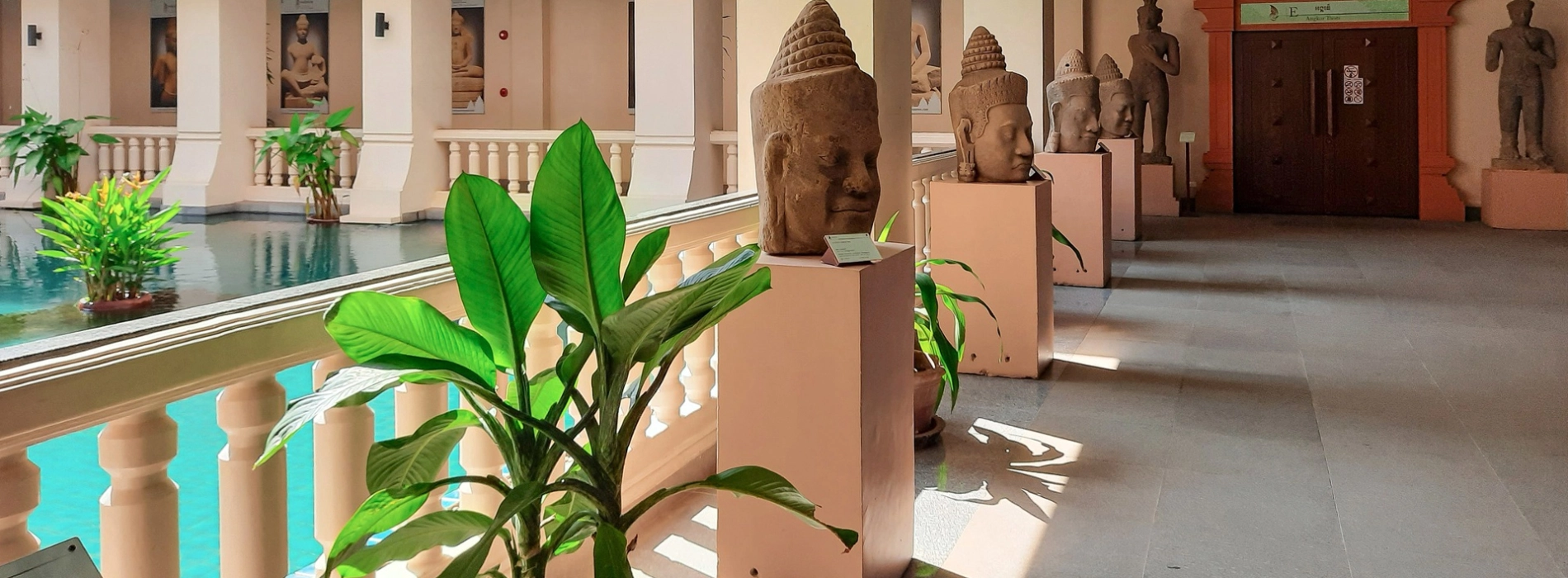
Located near the infamous Angkor Wat, Angkor National Museum is dedicated to collecting, preserving, and showcasing artifacts from the Angkor era. The museum serves as an educational resource on the art and culture of the Khmer civilization. This is a must-visit destination for history enthusiasts seeking to explore the history and culture of Cambodia.
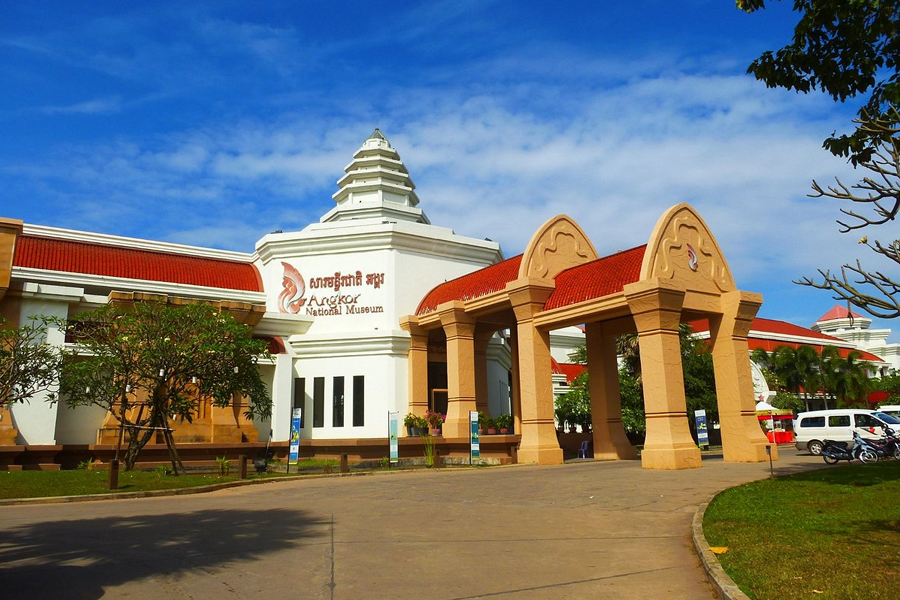
Angkor National Museum (Cre: TripAdvisor)
Founded in 2007 in Siem Reap, Cambodia, near the Angkor Archaeological Park, the Angkor National Museum aims to preserve and exhibit artifacts from the Khmer Empire, especially the ones from the Angkor archaeological sites. The museum’s exhibits include sculptures, ceramics, inscriptions, and other relics depicting various aspects of Khmer culture, including architecture, religion (Hinduism and Buddhism), and daily life during the empire's golden age. As a significant cultural conservation and education site, it attracts visitors far and wide, eager to explore Cambodia's rich historical heritage.
The Angkor National Museum offers a unique experience to visitors, allowing them to journey back in time, to the golden age of the Khmer Empire through the use of multimedia technology. Through engaging multimedia presentations, tourists can immerse themselves in the golden era of the Khmer Empire, exploring the remarkable achievements in Khmer art, culture, and architecture that have left a lasting impact on Cambodian society.
As a foreign tourist, you need not worry about the language barrier, as audio guides are available at the entrance in Khmer, English, French, German, Japanese, Chinese, Korean, and Thai. They are available for 5 USD each.
The museum features eight exhibition rooms, also known as “Galleries”, that display historical documents and the cultural heritage of the Khmer civilization. Before exploring those rooms, visitors are invited to an 80-seat theater, known as the “Briefing Hall”, for an introduction to the museum's collections, exhibition rooms, and facilities. The introduction show, also available in Khmer, Korean, Japanese, Chinese, English, French, or Thai, is scheduled every 15 minutes.
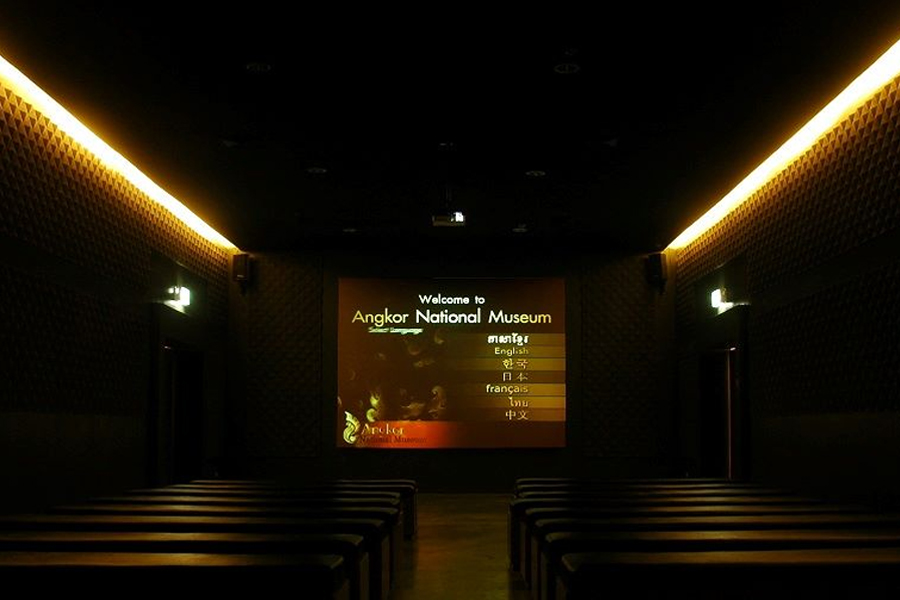
The Briefing Hall (Cre: Angkor National Museum)
This gallery is unique in that it consists of a single large room rather than a series of maze-like alcoves, making the sight of numerous Buddhas particularly striking. Hundreds of small and miniature Buddha figurines, crafted from metals, jewels, and wood, line the walls, each individually illuminated and labeled with the period of their creation and their place of discovery. In the center of the room, life-size and larger Buddha statues are displayed. The collection features Buddhas from Banteay Kdei, Bayon, Angkor Wat, and Preah Vihear.
This is the only exhibition that features one large room, rather than a series of maze-like sections. When visitors step into the room, they will be amazed at the sight of a thousand Buddha images.

Exclusive Gallery: 1,000 Buddha Images (Cre: Klook)
On the sides of the wall are hundreds of smaller Buddha statues, all made of various materials, including metal, jewels, and wood, which are then illuminated to highlight them. They are all labeled with descriptions identifying the period they were made and where they were discovered.
This gallery, along with the subsequent ones, features mural-sized descriptions and short films within maze-like rooms, narrating the history of the Pre-Angkor Period, the cradle of Khmer civilization. Exhibits in this gallery include statues, along with other relics known as lingas, lintels, and colonnettes, dating back to a time before the traditional Angkorian style.

Gallery A (Cre: Angkor National Museum)
This gallery delves into several key Hindu and Buddhist religious stories and folk tales depicted on Angkorian temples, including the iconic Churning of the Sea of Milk carved into the rear wall of Angkor Wat. It also features a concentration of carvings of Buddhist and Hindu religious figures.
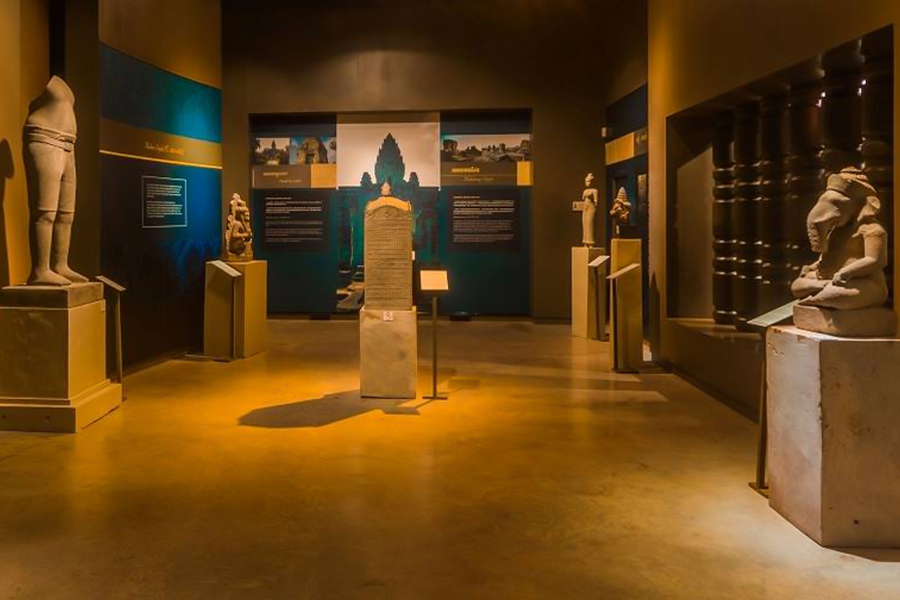
Gallery B (Cre: Angkor National Museum)
This exhibition highlights several great kings of the former Khmer Empire, notably King Jayavarman II, the founder of the empire after unifying two Chenla realms; Yasovarman I, who established Angkor as the capital; Suryavarman II, who commissioned the construction of Angkor Wat and Jayavarman VII, who constructed Angkor Thom. It is filled with statues of these kings and artifacts from the temples they commissioned.
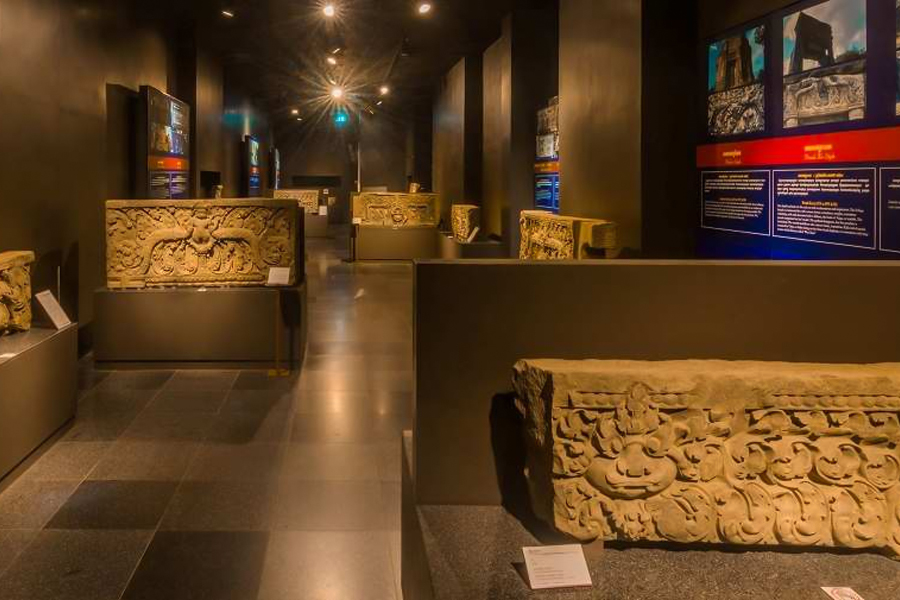
Gallery C (Cre: Angkor National Museum)
This exhibition explores the history, spiritual concepts, and architectural techniques behind the magnificent Angkor Wat, the world's largest religious monument and Cambodia's national symbol.
Within this museum section, a large film gallery presents stunning images of the temple and explains its construction in great detail. The exhibition also includes many restored figures from Angkor Wat and post-Angkorian wooden statues used for worship at the temple until several hundred years ago.

Gallery D (Cre: Angkor National Museum)
In this exhibition, visitors can explore the history and artifacts related to the construction and expansion of Angkor Thom, detailing the shifts in religious beliefs from Hinduism to Buddhism, while also showcasing ancient engineering techniques used for public utilities like roads and extensive irrigation projects commissioned by King Jayavarman VII that supported the entire population at the time.
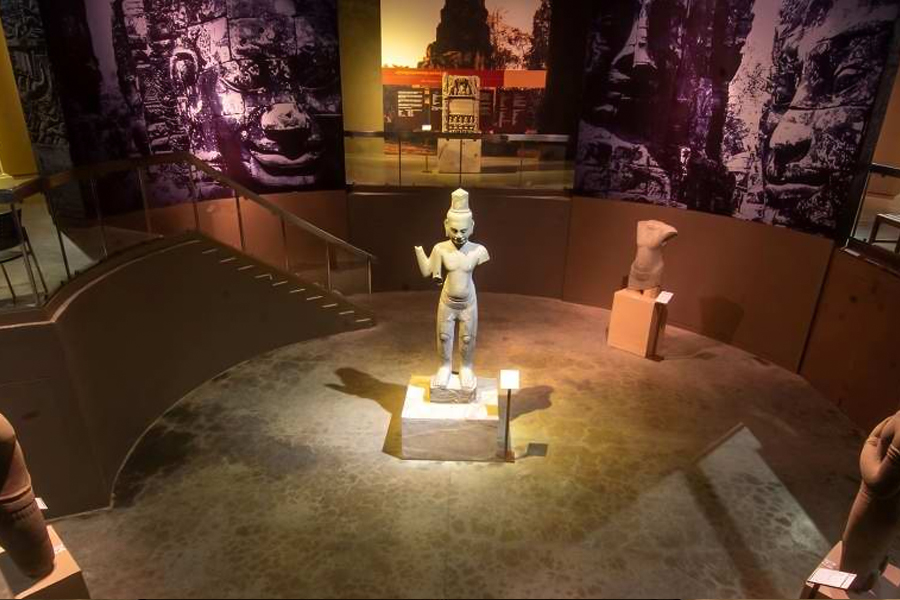
Gallery E (Cre: Angkor National Museum)
Perhaps the most interesting exhibition of all, this gallery features a collection of stone slabs adorned with ancient Khmer and Sanskrit inscriptions. Each slate is accompanied by explanatory placards below. The inscriptions cover a range of topics such as the construction of medical centers, lists of names of former slaves, resolutions of land disputes, and praises of kings and gods.
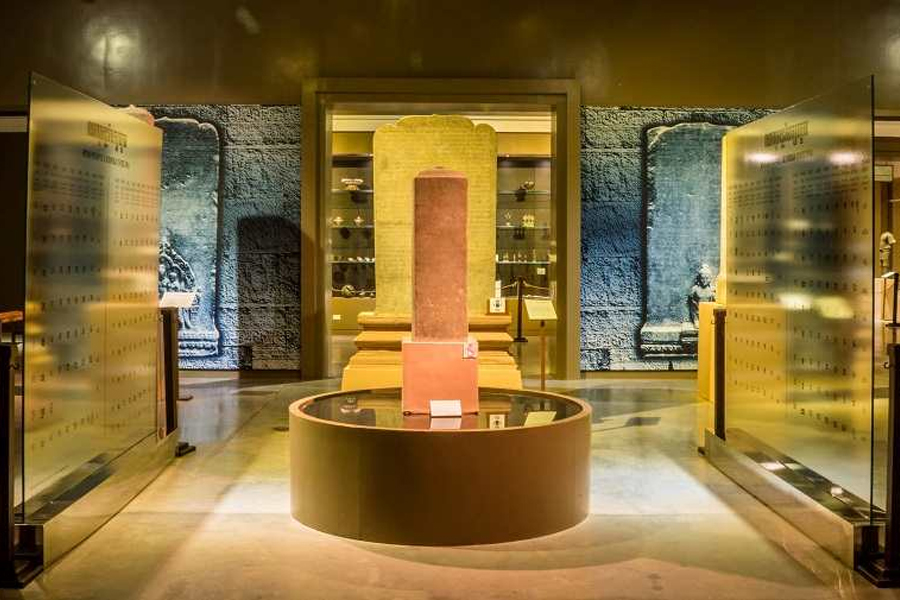
Gallery F (Cre: Angkor National Museum)
This exhibition showcases multiple busts and statues of celestial dancers known as Apsaras, the members of the royal dynasty and warriors throughout history, and even gods and goddesses, illustrating the evolving fashions and styles during the Angkorian era. Additionally, it features a collection of ancient jewelry and headdresses. This section cleverly leads into the final room - the gift shop, where high-quality reproductions of these historical fashions are available for purchase.

Gallery G (Cre: Angkor National Museum)
Read more: The best family tour in Cambodia
The best time to visit Angkor National Museum in Siem Reap, Cambodia, is during the dry season, which typically runs from November to April. During this period, you'll encounter sunny days with little to no rain, making it ideal for exploring the museum, but more importantly the adjacent temples of Angkor Complex and other outdoor activities. Also, you should keep in mind that the museum has a strict no-photos policy, meaning you cannot take pictures inside the complex.
Angkor National Museum is located at 968 Vithei Preah Sihanouk Avenue, Siem Reap. To get there, you have a few options:
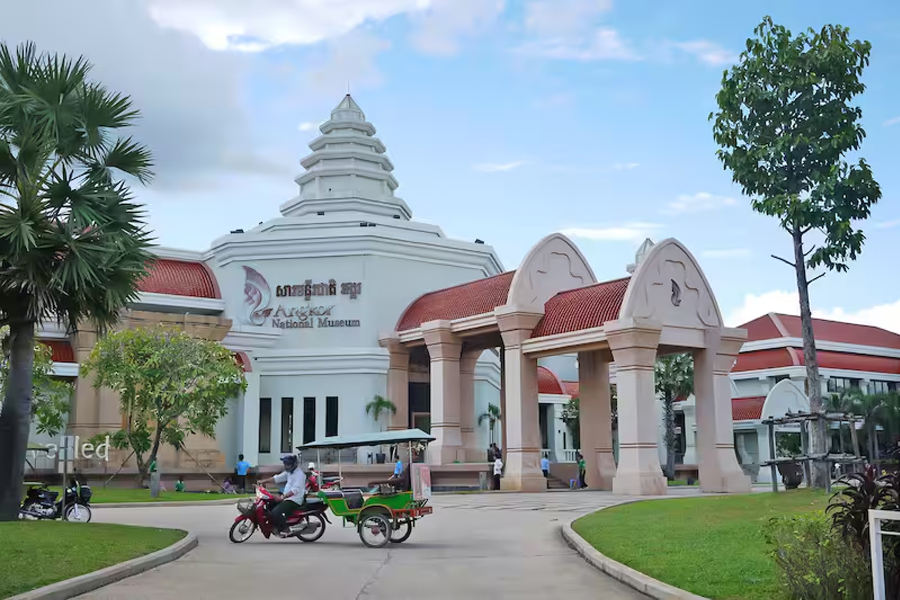
How to get to Angkor National Museum (Cre: Hotels.com)
In conclusion, visiting the Angkor National Museum offers an unforgettable journey through the rich history and cultural heritage of the Khmer civilization. If you're planning to visit Siem Reap to visit the Angkor Complex, don’t forget to check out the museum as well to learn more about the Angkor monuments.
If you already want to visit Siem Reap, you can contact Asia King Travel straight away. We can assist you with everything, from itinerary planning to booking accommodations and arranging guided tours, ensuring you have a memorable experience exploring Cambodia.
Read more: Cambodia tours 10 days